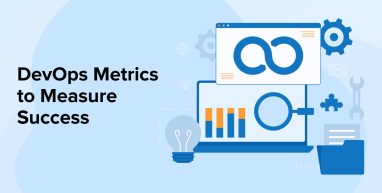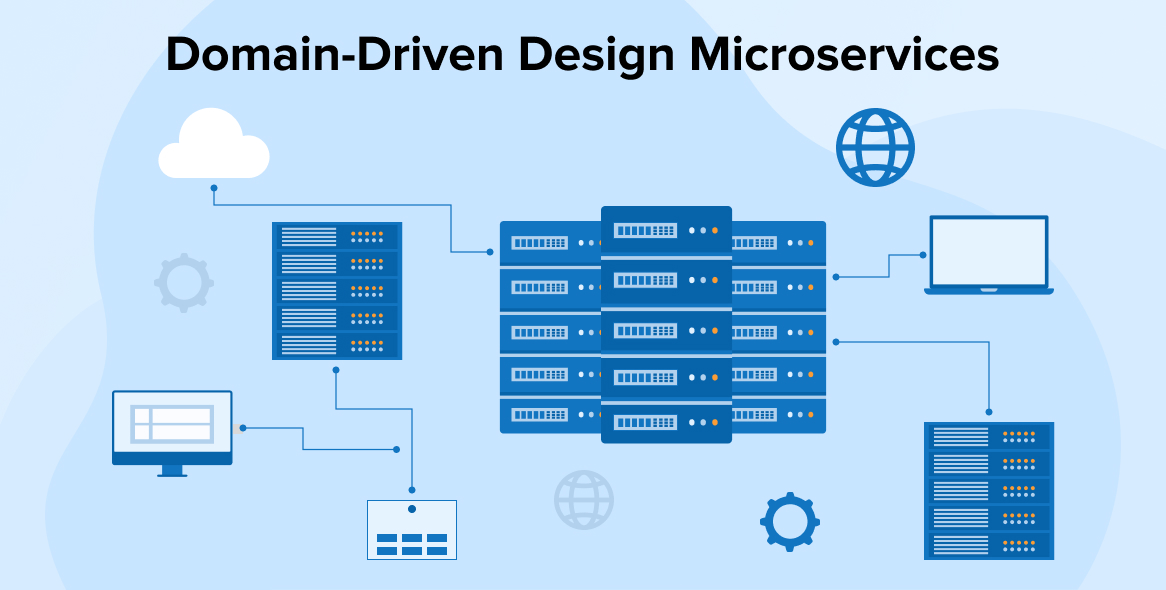
Most of the companies adopting DevOps have witnessed significant growth. Many top companies, like Microsoft and IBM, have successfully employed DevOps best practices in their IT projects.
But adopting DevOps is not like buying a car and start driving around. Like you need fuel to keep the vehicle working, DevOps also needs continued support and monitoring.
These KPIs also help companies identify where their system needs improvement and measure the return on their investment. This article outlines the DevOps metrics you should track to manage your application’s health and performance.
1. What are DevOps Metrics?
You leverage quantitative measures to analyze and improve the development operations of your project, which are known as DevOps metrics. Based on the project priorities, these metrics help find and fix problems in your workflow. The DevOps metrics are categorized into the following groups:
- Deployment Metrics: For measuring the frequency of the code deployments and their success rates.
- Lead-time Metrics: They measure the time taken to commit code changes to the existing system.
- Quality Metrics: These metrics measure the quality of the code, may it be finished software or simple updates.
- Operations Metrics: They measure the performance of the system in production.
- Business Metrics: This measures the impact of the software on the business.
- Team Metrics: Used to measure the collaboration and productivity of the DevOps teams.
Determining the right metrics helps DevOps teams to continuously improve their software development and delivery processes.
1.1 Why Use DevOps Key Metrics?
To ensure that software development and delivery processes run seamlessly, you need to implement DevOps metrics that prioritize the goals of your project and organization. There are many reasons to use DevOps metrics:
- Continuous Improvement: You can get valuable insights into the performance of your system by analyzing the data and monitoring the metrics. They help you make informed decisions on how to improve your project workflow.
- Quality Assurance: DevOps metrics help identify issues early in the software development process, reducing the risk of defects and delivering quality products.
- Business Impact: They not only keep track of the work but also help understand if the efforts align with the organizational goals.
- Collaboration: Using DevOps metrics, you get clear visibility into the team’s productivity, efficiency, and communication capabilities of the team.
There are many more benefits of using DevOps metrics, but you have to pick the right tools to avail them. It’s essential to establish clear processes for data collection and analysis. They drive continuous improvement and delivery throughout the software development life cycle.
1.2 How to Measure DevOps Metrics?
Receiving customer appreciation and positive feedback is proof of your successful campaigns. It tells you the customer satisfaction metrics in DevOps are hitting right at their mark. When both end-users and stakeholders are happy with the results, it means you are on the right track.
However, along with the qualitative feedback, it’s important to rely on numbers to remove potential biases. Use DevOps KPIs and metrics to track and analyze system performance. You can also automate the entire process with the help of automation tools. They bring vital information regarding your systems on the premises of the key metrics.
2. DORA’s Four Key Metrics
A plethora of DevOps metrics are available to measure system performance, but here are the four key metrics to consider:
- Lead Time for Changes: The time required for committing changes to the deployed code base is called lead time. It is a crucial metric and shouldn’t be confused with the cycle time.
- Change Failure Rate: After production, the percentage of your code changes that need rectification or hotfixes is called the change failure rate. It doesn’t include the failures detected during the tests and fixed before deployment.
- Deployment Frequency: How often you deploy a new code to production, is measured with deployment frequency. It is important to distinguish between ‘delivery’, which refers to code changes released into the pre-production stage environment, and ‘deployment’, which indicates when code changes are released to the production.
- Mean Time to Recovery (MTTR): MTTR measures the time your system takes to recover from a total failure or a partial interruption. Regardless of the reason behind the disruption, it is important to use this metric for your DevOps software.
3. More Metrics to Consider
DevOps is used for continuous and quick code delivery. But when you are moving fast, there are high risks that you might break things or deliver faulty products. Therefore, you need these additional metrics for a complete assessment of your systems and workflows.
3.1 Deployment Time
This metric measures the time it takes for an actual deployment. Tracking deployment time helps identify issues delaying the process. When you can deploy code more quickly, you can also do it more often.
3.2 Mean Time to Detection
It is important to determine how much time it takes to detect the problems in your system. The longer detection time can lead to more trouble for your system and its users. Although customer feedback alerts you to problems, it’s good to know about errors as early as possible.
It’s ideal to identify them during the development stage itself. A shorter detection time indicates that you have effective monitoring strategies and tools in place.
3.3 Mean Time to Failure
The average time a system runs before breaking down is the uptime or mean time to failure. This metric tells you how long a non-repairable component will run before it fails. Thanks to this metric, you get to know how often you need to replace these components in your system, saving you from costly system failures.
3.4 Deployment Success Rate
In a rush to deliver the code, sometimes developers neglect following the quality standards or DevOps practices, resulting in deployment failure or faulty software. Tracking the deployment success rate would help you avoid this problem.
This metric informs you how many deployments have actually succeeded and how many resulted in a failure. To get that data, the developers must set criteria for DevOps success.
3.5 Cycle Time
The cycle time is used to measure productivity, by calculating the average time taken from deciding to add a feature to the actual launch of the feature. It covers the entirety of the feature development from ideation to deployment. Once you commit the first line of code, the lead time starts ticking. A shorter cycle time means the DevOps team can deliver features quickly and consistently.
3.6 Application Usage and Traffic
App usage and traffic metrics are used to keep track of the number of users accessing your system. After your software goes live, it’s important to monitor how many people are visiting, using, or interacting with it. This metric will provide insights into user engagement and the total number of interactions that occurred.
This metric acts as indirect feedback on deployment. A spike in visitors indicates the risk of overload, whereas a dip might signal potential issues with your system. This also helps you determine if the system is running on an appropriate course or not.
3.7 DevOps Error Budget
DevOps error budget represents the average time a system would remain out of service without requiring compensation for users. This enables the developers to test and deploy new features with less concern about the risks of not fulfilling the service level agreements.
When the time exceeds the error budget and the system is still performing below SLA terms, then all new releases must be stopped and the team should focus on making the system operate above the error budget.
3.8 Defect Escape Rate
The defect escape rate measures the number of defects that escaped the error detection or testing processes and were launched into the production environment. It indicates how effective your testing methodologies really are.
So a high defect escape rate means you have conducted a poor code review. A low defect escape rate means you were thorough with code testing. In general, you must strive to detect at least 90% of the errors in your testing stage before deployment.
3.9 Service Level Agreements
Many companies create service-level agreements to ensure that their project and operations comply with defined standards. Even if there is any such agreement, you always have certain user expectations that work as unwritten service-level agreements. This metric keeps an eye on factors that help organizations align their performance with user needs.
3.10 Service Level Indicator
The SLI contrasts the uptime and app performance against predefined standards. Service Level Agreements (SLAs) focus specifically on uptime, whereas Service Level Objectives (SLOs) are used for the same purpose when SLAs are not in effect. The SLIs measure whether services are at the level promised by the companies to the customers.
3.11 Service Level Objectives (SLOs)
The service level objectives refer to the standards of services that you commit to providing. It includes guaranteed uptime, response time, and liability. They are basically the targets that a DevOps team needs to achieve for customer satisfaction. You need to determine whether SLOs are met, as they play a vital role in customer retention.
3.12 Mean Time Between Failures
The Mean time between failures measures the average time between two repairable failures of the system. This metric indicates whether your system is reliable or not. It also tells if your team can reduce or prevent potential system failures.
A higher MTBF rate means a more reliable system, it shows that your software might have faced a few failures but is repaired quickly. Whereas a low MTBF shows that your software is constantly kept under maintenance.
This says that you might need to focus on failure metrics more closely or track more relevant ones. The MTBF is related to the Mean Time to Repair (MTTR) metric. The less time you take to restore your services, the better MTBF rates you get.
3.13 Software Security Coverage (SSC)
SSC measures the total number of software components in your DevOps program. It can be anything from apps to containers or microservices.
3.14 Vulnerability Open Rate (VOR)
The VOR measures the number of vulnerabilities identified when releasing the code into a production environment. The issues are then categorized according to their rigor. This metric is used to find even minuscule errors in code to help your development and operations teams get better at writing clean and bug-free code. By focusing on potential vulnerabilities, your DevOps software helps keep your system secure.
3.15 Security Technical Debt (STD)
This KPI is used to measure the total number of unresolved security errors accumulated in production. This is kind of a defect escape rate but in terms of security. The more quickly you address these problems, the more secure your system will become.
On top of that, the Mean Vulnerability Age (MVA) metric allows you to measure how long the vulnerabilities have remained unresolved in the system. Implemented together, the MVA and the STD metrics help determine your system’s Security Risk Exposure (SRE).
4. Conclusion
In addition to four key DevOps metrics, you must also prioritize the metrics that help you accumulate the required data. This data allows you to make informed decisions based on real-time stats and facts. The more relevant data you gather from multiple sources, the better decisions you can make in the context of your DevOps pipeline, also set new organizational goals.
FAQs
What are the key DevOps metrics?
The four key DevOps metrics are lead time for changes, change failure rate, deployment frequency, and mean time to recovery.
Why measure DevOps KPIs?
KPIs are critical for tracking and improving the metrics to give you control over the DevOps processes and workflow.
What are the most important things in DevOps?
DevOps automation is one of the most important practices. Automating the software development cycle as much as possible allows developers to focus on writing clean code. An automated CI/CD pipeline helps reduce manual errors, enhancing team productivity.






Comments
Leave a message...